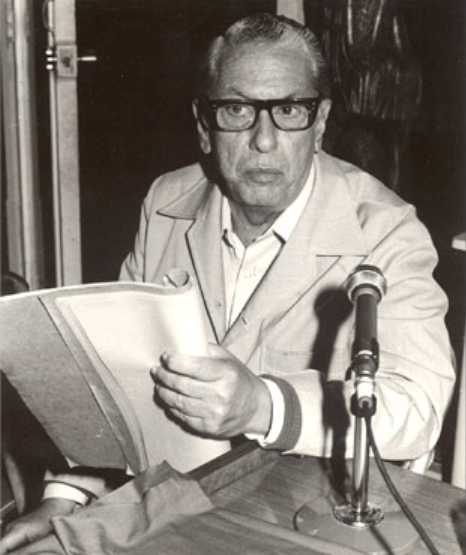4.1.2.9.4 Other poetry collections published by Cintio Vitier (1921 – 2009) between 1940 and 1950

The last poetic works published by the prolific Cintio Vitier in the 1940s and 1950s were those entitled “La borra”, 1946; “Capricho y homenaje”, 1947; “El hogar y el olvido”, 1949 – which will be addressed in a separate section – and “Substancia”, already in 1950, in which he insists on interrogating reality and his mission within it, the substance into which he must transmute it in his poetry.
This stage of Cintio Vitier’s creative work, which began with “Sedienta cita” (Thirsty Quote), is characterized by the prevalence of aesthetic ends over communicative ends, which translates into poems that are hermetic, like poetic ecstasies, but where the forms are always free and irregular, with a certain baroque quality to the adjectives and verbal dazzle.
In “Capricho y homenaje” he strikes a similar artistic chord and a certain sense of dissolution in the surroundings is appreciated, of which he wants to be a part, but not as violence but with a subtle incorporation, an absorbing external action, to be part and at the same time transcend, which is also related to Origenist searches.
In “Symbols”, a text from his collection of poems “Substance”, one can appreciate the poetic sense of an attempt to reveal reality as an intricate weave of symbols that allude to another reality, a glimpse only and in which resides the ultimate substance of poetry, that beyond with which a kind of fusion awaits, more than merely sensitive, of an understanding that is also a quasi-carnal penetration into the deep fabric of reality:
“Every morning the symbols
They are looking at me again,
behind a burning night
which the light cannot reach
but to give it more beauty.
They are the silent trees,
They are the dew and the clouds,
the wild sea, the shapes
of all creatures,
made of man and dust.”
Although it is not exclusive to these notebooks or to this period, the dreamlike has an important weight in it, but not in a surrealist sense, but rather the dreamlike planted in reality, that which is symbolic in the event itself, which goes beyond it and the poet cannot reveal from its threshold, which is why he insists on the metaphor of the blind or dazzled poet, who tries to open behind the scenes that escape him himself.








